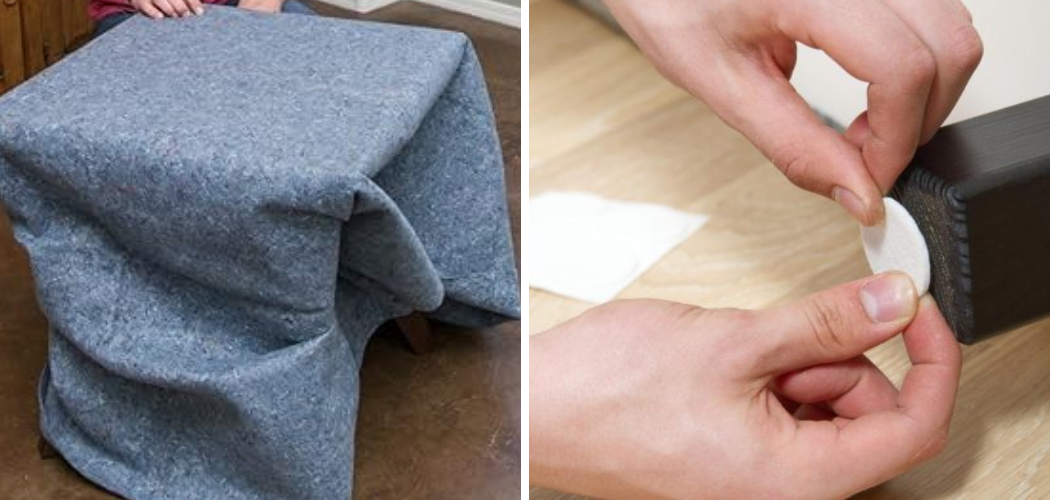Furniture pads are essential accessories designed to protect floors, furniture, and other surfaces from scratches, dents, and scuffs caused by movement. These pads act as a protective barrier between the furniture and the surface, absorbing friction and impact. “How to use furniture pads” is a common question among homeowners looking to preserve their interior spaces. These pads come in various materials, such as felt, rubber, and cork, and are available in different sizes and shapes to suit a wide array of furniture and flooring types.
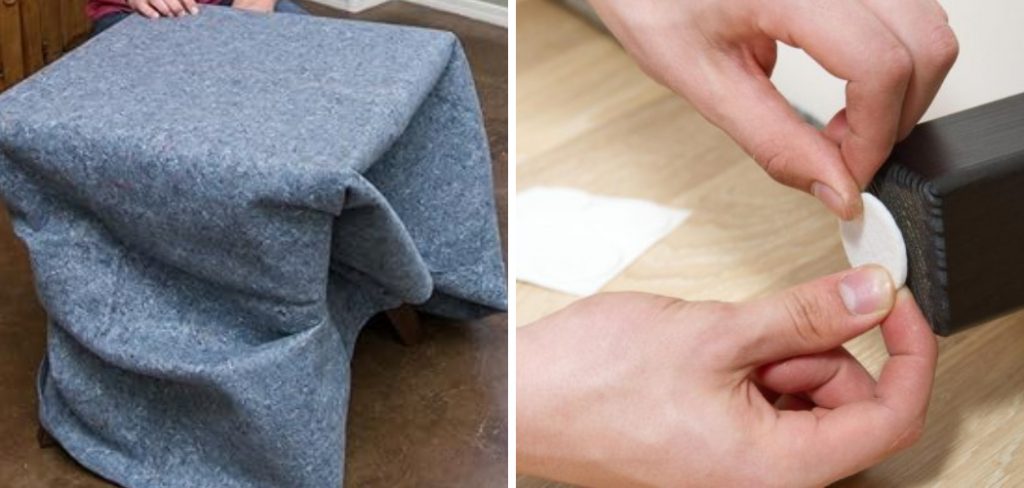
The purpose of this article is to provide a detailed guide on how to use furniture pads effectively to prevent damage and prolong the lifespan of your furniture and floors. We will offer tips and techniques for selecting the right pads based on your specific needs and demonstrate the proper way to apply them for optimal protection and performance.
Types of Furniture Pads
Furniture pads come in various types, each designed to offer specific benefits and protection for different furniture and flooring needs.
- Felt Pads:
- Ideal for wooden furniture legs and other smooth surfaces, felt pads offer gentle protection against scratches and dents.
- Rubber Pads:
- Rubber pads provide grip and cushioning, making them suitable for preventing furniture from sliding on hard floors.
- Slip-On Pads:
- These pads are designed to slip over furniture legs, providing both protection and stability.
- Adhesive Pads:
- Adhesive-backed pads are easy to apply and suitable for a wide range of furniture and surfaces.
Preparation
Before applying furniture pads, proper preparation is crucial to ensure optimal adhesion and protection.
Clean the Surface:
Ensure the surface where the pads will be applied is clean and free of dust, dirt, and debris. This step is essential as any particles left on the surface can interfere with the pad’s adhesive or grip, reducing its effectiveness. Use a damp cloth or a suitable cleaner to thoroughly clean the bottom of furniture legs or bases and let them dry completely before proceeding.
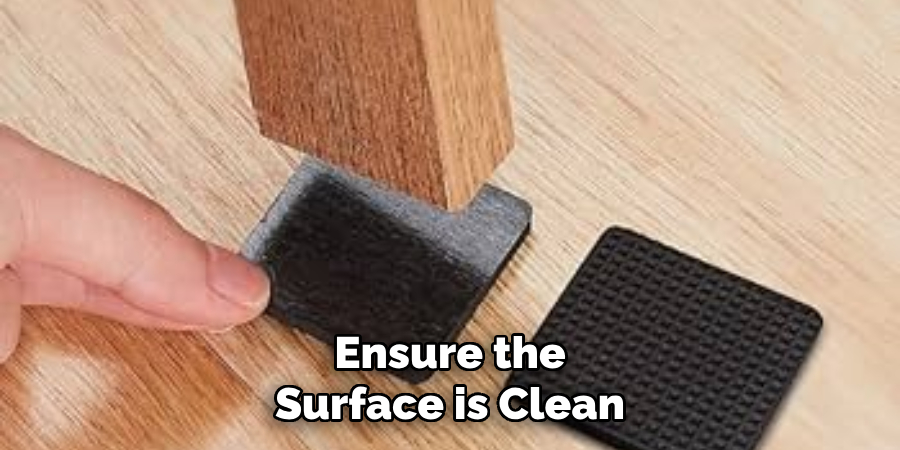
Measure and Select Pads:
Measure the size of the furniture legs or base to determine the appropriate pad size. Using a ruler or tape measure, obtain the exact dimensions to match the pads accurately. This ensures the pads cover the area effectively and avoid overhang, which can lead to premature wear or reduced protection.
Select the type of pad that best suits the furniture and flooring type. For instance, felt pads are ideal for wooden furniture on hard floors, while rubber pads are better suited for furniture that needs additional grip to prevent sliding.
Test Placement:
Before applying the pads to all furniture pieces, test placement on a small area to ensure they fit and provide the desired protection. Apply a pad to one leg or a small section of the furniture and check for stability and protection. If satisfied, proceed to apply the pads to the remaining pieces of furniture. This step ensures that the pads are the correct fit and that their performance meets your expectations.
How to Use Furniture Pads: Application
1. Peel and Stick Pads:
Peel and stick pads provide a quick and easy solution for protecting your floors and furniture.
- Peel Off the Backing From the Adhesive Pad:
Begin by gently peeling off the protective backing from the adhesive side of the pad. Ensure you do this carefully to avoid touching the adhesive, which can reduce its effectiveness.
- Align the Pad With the Furniture Leg or Base and Press Firmly to Adhere:
Position the adhesive pad over the bottom of the furniture leg or base, making sure it is centered and completely covers the area. Press down firmly to adhere the pad to the surface, ensuring maximum contact for a secure hold.
2. Slip-On Pads:
Slip-on pads are beneficial for providing a secure fit and added stability to furniture legs.
- Slide the Pad Over the Furniture Leg, Ensuring a Snug Fit:
Carefully slide the slip-on pad over the furniture leg, ensuring it fits snugly and covers the entire bottom of the leg. These pads are typically made of flexible materials, allowing them to adapt to various leg shapes and sizes.
- Adjust the Position as Needed to Ensure Stability:
Once the pad is in place, adjust its position if necessary to ensure the furniture is stable and evenly balanced. This step helps prevent wobbling and provides added protection to both the furniture and the flooring.
3. Adhesive Felt Pads:
Adhesive felt pads offer gentle protection for delicate surfaces and are easy to apply.
- Peel Off the Backing From the Adhesive Felt Pad:
Similar to peel-and-stick pads, start by peeling off the protective backing from the adhesive side of the felt pad.
- Press the Pad Firmly Onto the Furniture Leg or Base, Ensuring Full Contact:
Align the felt pad with the furniture leg or base, and press it firmly to ensure it adheres fully to the surface. The felt material provides a soft barrier that prevents scratches and scuffs on smooth floors.
4. Rubber Pads:
Rubber pads are ideal for preventing furniture from sliding and providing additional grip.
- Place the rubber pad under the furniture leg, ensuring it covers the entire bottom surface:
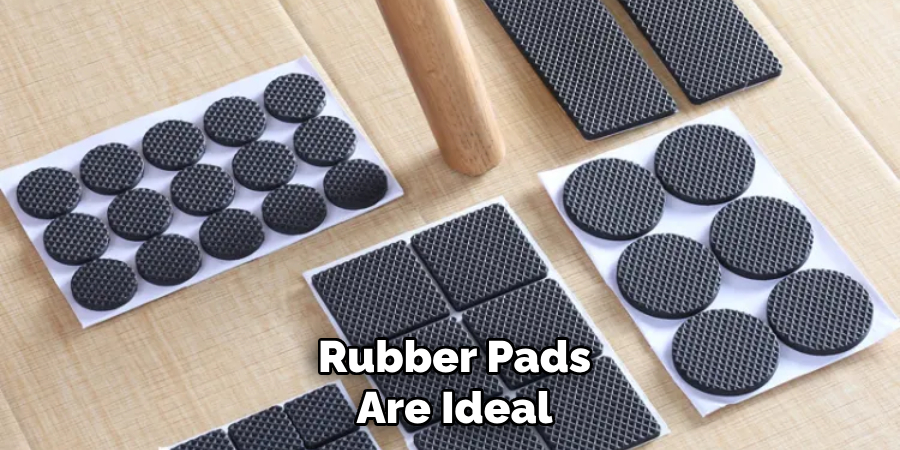
Position the rubber pad under the furniture leg, ensuring it covers the entire bottom surface and provides a solid grip.
- Press Down Firmly to Ensure Proper Adhesion and Grip:
Press down firmly on the furniture to ensure the rubber pad adheres properly and provides a stable, non-slip base. This will help keep the furniture in place and protect your floors from any potential damage.
Maintenance and Replacement
Regular Inspection:
- Periodically Check the Condition of the Furniture Pads to Ensure They Are Intact and Providing Adequate Protection:
Regularly inspecting your furniture pads ensures they remain effective in protecting your floors and furniture. Look for any signs of wear, such as thinning, fraying, or loss of adhesion.
Replace Worn Pads:
- Replace Worn or Damaged Pads as Needed to Maintain Effective Protection:
When pads show signs of wear or damage, replace them promptly to ensure continuous protection. Using worn pads can lead to scratches, dents, and instability.
Clean Pads and Surfaces:
- Clean the Furniture Pads and the Surface Underneath Regularly to Remove Dirt and Debris That May Affect Adhesion and Performance:
Keeping the pads and the surface underneath clean enhances their effectiveness. Dust and debris can accumulate over time, reducing the pads’ grip and protective qualities. Use a soft cloth and cleaning solution appropriate for your flooring to maintain cleanliness.
Tips and Considerations
Use Correct Size:
- Ensure the Pads Are the Correct Size for the Furniture Legs or Base to Provide Adequate Protection:
Selecting the right size pad is crucial for effective protection. Measure the dimensions of your furniture legs carefully and match them with the appropriate pad size to cover the entire contact area without overhanging.
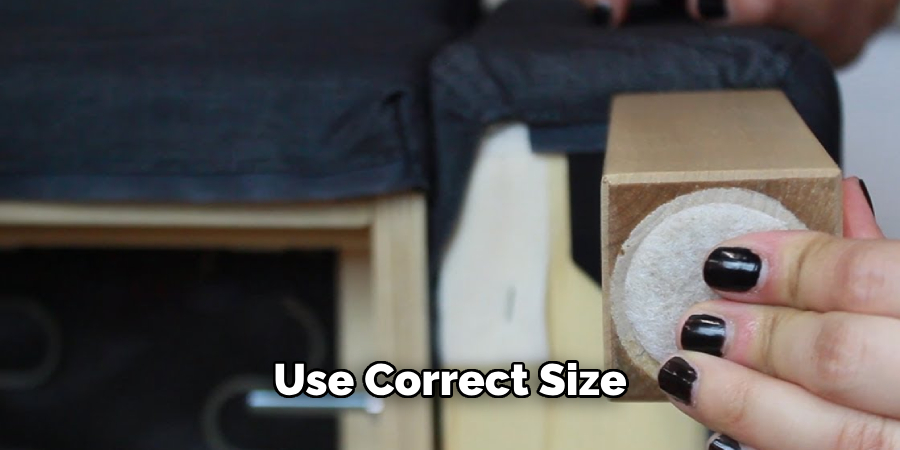
Consider Flooring Type:
- Choose Pads That Are Suitable for the Type of Flooring to Prevent Damage and Ensure Proper Grip:
Different floors require different types of pads. For example, felt pads work well on hardwood floors, while rubber pads provide a better grip on tile or laminate surfaces. Selecting the right pad ensures optimal protection and prevents floor damage.
Rotate Furniture:
- Periodically Rotate Furniture to Distribute Weight and Prevent Uneven Wear on Pads and Floors:
Rotating your furniture periodically helps distribute weight evenly, reducing the risk of indentations and wearing out specific areas of both pads and flooring. This practice prolongs the life of your furniture and floors.
Check Compatibility:
- Ensure the Adhesive Pads Are Compatible With the Furniture Material to Avoid Damage or Residue:
Not all adhesives are suitable for every type of furniture. Before applying adhesive pads, check their compatibility with your furniture to prevent any potential damage or adhesive residue that can be difficult to remove.
Frequently Asked Questions (FAQs):
Q1: What Type of Furniture Pads Should I Use for Hardwood Floors?
A1: For hardwood floors, felt pads are usually the best option. They provide a soft barrier that prevents scratches and scuffs while allowing for easy movement of the furniture without damaging the floor surface.
Q2: How Often Should I Replace My Furniture Pads?
A2: It’s recommended that you inspect and replace your furniture pads periodically. Replace them when you observe signs of wear, such as thinning, fraying, or loss of adhesion. Regular maintenance ensures they continue to protect your floors effectively.
Q3: Can Adhesive Pads Leave Residue on My Furniture?
A3: Some adhesive pads may leave residue, particularly if they are not compatible with the furniture material. Always check the compatibility of the adhesive pads with your furniture to avoid any potential damage or difficult-to-remove residue.
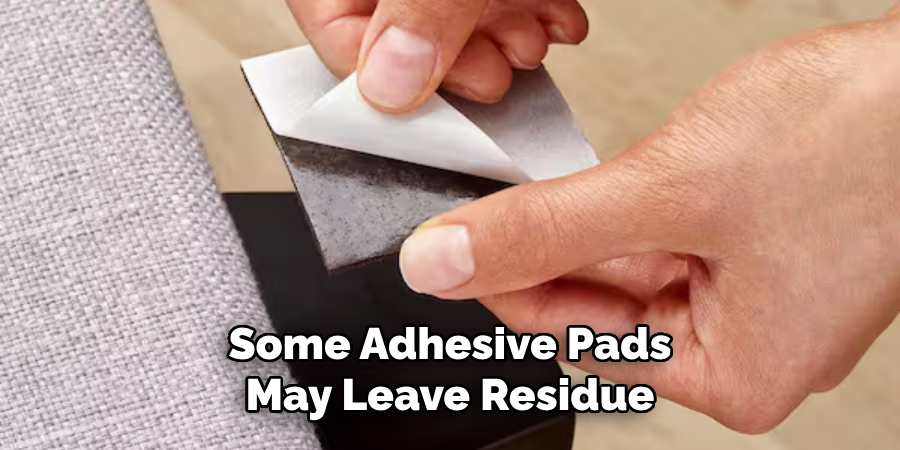
Q4: Are Slip-On Pads Suitable for All Types of Furniture Legs?
A4: Slip-on pads are versatile and typically made of flexible materials, allowing them to adapt to various leg shapes and sizes. However, it’s important to ensure a snug fit for maximum stability and protection. Check the dimensions and material compatibility before choosing slip-on pads for your furniture.
Conclusion
Using furniture pads is essential to protecting furniture and floors from damage. Various types of pads, such as peel-and-stick, slip-on, felt, and rubber pads, cater to different needs and surfaces. Proper application and regular maintenance are crucial for effectiveness.
Investing in quality furniture pads and using them consistently helps to preserve the beauty and integrity of your furniture and flooring. Don’t underestimate the value of such a simple solution.
Knowing how to use furniture pads is a simple yet effective way to protect surfaces and prolong the life of your furniture. With the right pads and proper application, homeowners can enjoy durable and beautiful floors and furniture for years to come.
You can also check it out to Move Furniture on Hardwood Floors
